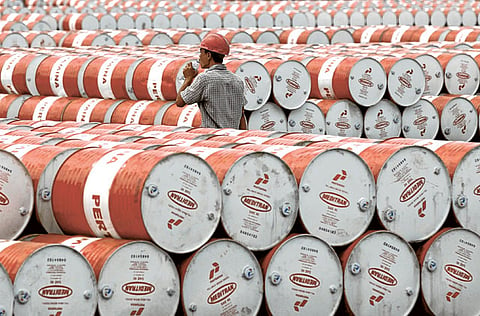Checking carbon intensity would be a good start towards a net zero 250 transition
Carbon intensity readings must however integrate a good degree of transparency

It is clear that there is no one, single solution to the climate crisis.
But in the last several years, it has become increasingly evident that robust measurement and management of the emissions generated from our daily activities – including our continued reliance on hydrocarbons – will play a major role in how we look at commodities from now on.
Global demand for voluntary carbon credits to offset carbon emissions has grown sharply since the start of the pandemic, as the need to pursue aggressive decarbonization has become ever more urgent. How this will happen – and critically, whether it can happen quickly enough to stave of global heating well above the 2-degree warming scenario set out in the Paris Climate Agreement – is a question that remains largely unanswered.
Going ‘neutral’
Voluntary carbon credit markets, which have been around since the Kyoto Protocol days, are one of the ways that commodities markets have looked to manage and offset the greenhouse gas emissions. This has led to an increase in “carbon-neutral” trading – wherein a company or organization looks to offset the emissions generated across the lifecycle of a fuel with credits sourced from the voluntary markets – first with LNG but branching out into other fossil fuel commodities, including naphtha, LPG and, increasingly, crude oil.
If this trend continues, the VCM could grow even faster than expected, providing not just an opportunity to channel capital and investment towards projects that can make a real difference in the fight against global heating, but also an opportunity to re-think about how we look at the carbon intensity of those things that we rely on every day.
Growth of this market is likely in the Middle East as well, where key initiatives have already been kick-started. Qatar-based renewable energy project certifier, the Global Carbon Council, started operations in 2019, and is one of the few groups specializing in the certification of renewable energy projects, even as other standards move away from them.
Renewable energy projects have been slower to get off the ground in parts of the Middle East, and growth in that sector will be critical for many countries to reach their climate objectives.
Additionally, the Middle East could become a trading hub for this new market: in September, Saudi Arabia’s sovereign wealth fund said that it was planning to launch a trading platform for carbon credits produced in the Middle East and North Africa.
Carbon intensity
Early this year, Oxy sold the first “carbon neutral” crude cargo – building on the strategy pioneered by the LNG industry in 2020 – shipping 2 million barrels of crude to Indian refiner Reliance, offsetting the emissions generated across the full lifecycle of the cargo with voluntary carbon credits certified by the Verified Carbon Standard, or VCS.
While there have been more trades of carbon neutral hydrocarbons since, this move towards carbon neutral trading has raised serious questions about how effective carbon offsetting really can be in the absence of emissions savings throughout upstream production and, critically, how to effectively measure those emissions.
Carbon emissions across upstream production have historically been notoriously difficult to measure, which can often make it easy to over-rely on estimates that can undercount the real environmental impact of upstream activity in the oil and gas sector.
Get a reading
This is where the carbon intensity of the upstream production process can become an attribute of the crude itself, almost like the density of the barrel, or its sulfur content. Carbon intensity is the calculation for how many kilograms of carbon is emitted in the production of one barrel of crude.
The industry sees this as the end goal, but getting to a point where carbon intensity is thought of as an attribute of a crude oil cargo will take evolution from the market.
As a first step to add transparency to carbon intensities for different crude grades around the world, S&P Global Platts has begun to work on what an upstream calculation will look like and has begun publishing monthly calculations that measure the carbon intensity of the crude produced at 14 different crude fields, many of which make up a large proportion of those used by Asian refiners.
For example, Iraq’s Kirkuk crude field – already one of the most carbon-intensive crude fields tracked by S&P Global Platts – saw the largest carbon intensity change on the month among the 14 fields Platts measures, up intensity nearly 42 per cent higher than it was in August, largely due to an increase in natural gas flaring and venting.
Kirkuk’s flared gas estimate increased 58 per cent on the month when looking at September, according to Platts Analytics. The field flared close to 6 Bcf of natural gas in September, compared to 3.7 Bcf in August.
Oilfields with higher flaring or venting rates tend to fall on the higher end of the upstream carbon intensity range, as carbon dioxide and methane negatively impact that field’s emission footprint. When looking at the bigger picture and all that is necessary to become net zero by 2050, being aware of carbon intensity when it comes to existing commodities is just the first step, but one that is absolutely necessary.
Sign up for the Daily Briefing
Get the latest news and updates straight to your inbox









